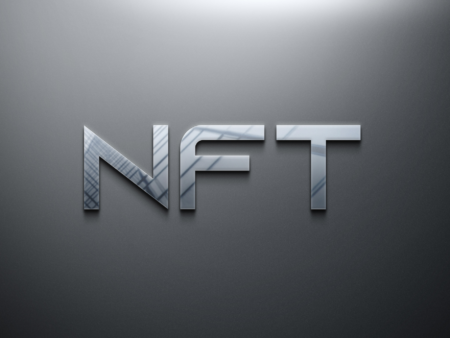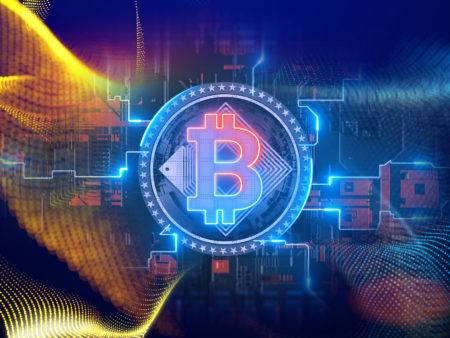dappGambl’s brief challenges NFT skepticism, highlighting untapped potential in gaming for a fresh perspective on NFTs.
A comprehensive analysis of the NFT market was recently carried out by dappGambl in reaction to multiple headlines suggesting that NFTs are no longer “useful.”
In-depth research and clarification of the dappGambl specialists’ views on the NFT market’s potential are provided by this report. The experts believe that there is still a great deal of room for NFTs and gaming to be a “perfect match.” Let’s examine the specifics.
NFT market: gaming and non-fungible tokens
Naturally, there is increasing interest in the potential future of so-called non-fungible tokens (NFTs) in the wake of dappGambl’s analysis revealing that 95% of NFTs have no market capitalization.
In a constantly evolving world of entertainment and technology, NFTs have become a ground-breaking invention that could revolutionise a number of industries.
While they are well known for being associated with digital art and collectibles, gaming-related interactivity is turning out to be a far more interesting use case.
Beyond JPEG photos and digital artwork, NFTs have the power to completely change how media is consumed and connected by gamers.
The predicted value of the gaming business worldwide by 2022 is close to $347 billion, of which about $248 billion will come from the mobile gaming sector.

Gamers’ revolution in the gaming industry: NFTs
Expert and dappGambl cryptocurrency analyst Josip Putarek offers his thoughts on how NFTs’ potential might be completely realised in the lucrative video game industry:
“Back on September 21st, ‘Call of Duty: Warzone Caldera’ was shut down by producers, leaving millions of players’ cosmetics behind locked doors. Players earned skins through gameplay challenges like Call of Duty’s Battle Passes, spending real money on a product that is now gone forever. Could this have been avoided? Absolutely!”
Putarek argues that the introduction of nonfungible tokens (NFTs) to the video game business presents a multitude of interesting opportunities for investors, developers, and players. This is not surprising.
“NFTs grant players true ownership of in-game assets, allowing them to buy, sell and trade with transparency and security. These assets are scarce and unique, contributing to their inherent value. Even if the game gets shut down, gamers will retain ownership.”
We also know that players can carry their virtual belongings from one game to another thanks to NFTs’ cross-platform compatibility, which contributes to the virtual world’s sense of continuity.
Additionally, through in-game activities like crafting, trade, and tournament competition, gamers can now create value in the real world. This reversals the trend of traditional gaming economies by enabling players to profit from their investments and talents.
Lastly, NFTs contribute to the development of a decentralised virtual environment where users have more influence over the rules, economy, and direction of the game.
This will guarantee top-notch gaming content for upcoming generations and enable the gaming community to create their own digital habitats.
NFT in disarray? initiatives looking for a different direction
NFT-related projects are looking for innovative methods to rethink their goals and bolster their benefits in the middle of a market downturn. As everyone is aware, there has been a lot of discussion around NFTs lately.
NFTs saw a sharp rise in public interest and produced previously unheard-of profits in 2021.
But the industry has recently seen a challenging time marked by a general drop in sales and item prices, which has made some doubtful about the sector’s long-term viability.
Early in July, Yuga Labs’ Bored Ape Yacht Club (BAYC), one of the most well-liked digital collections, had a considerable decrease in its minimum price, according to OpenSea data.
From 38 ether (ETH), or $73,000 at the time, to less than 28 ETH ($53,500), this collection decreased.
In a post on July 2, Will Clemente, co-founder of the digital asset analysis company Reflexivity analysis, noted that this decline was a part of a larger 90 percent decline in the BAYC collection.
A number of celebrities were impacted by the decline in value, including well-known musician Justin Bieber. As is well known, Bieber paid around $1.3 million to acquire a stake in BAYC, drawn by the buzz surrounding the 2021 NFT.
Not only did the devaluation disappoint the BAYC, but it also had an impact on the Mutant Ape Yacht Club (MAYC), the sibling collection of the BAYC.
Significant devaluations of other NFTs, like Azuki, Moonbirds, Cool Cats, Doodle, DeGods, Pudgy Penguins, and CryptoPunks, have also occurred recently.
Even worse, start-ups tied to NFT are having a difficult time.
Certain projects, like the decentralised social network Voice and the video platform Glass Protocol, have had to suspend development because of regulatory obstacles and lack of enthusiasm.











